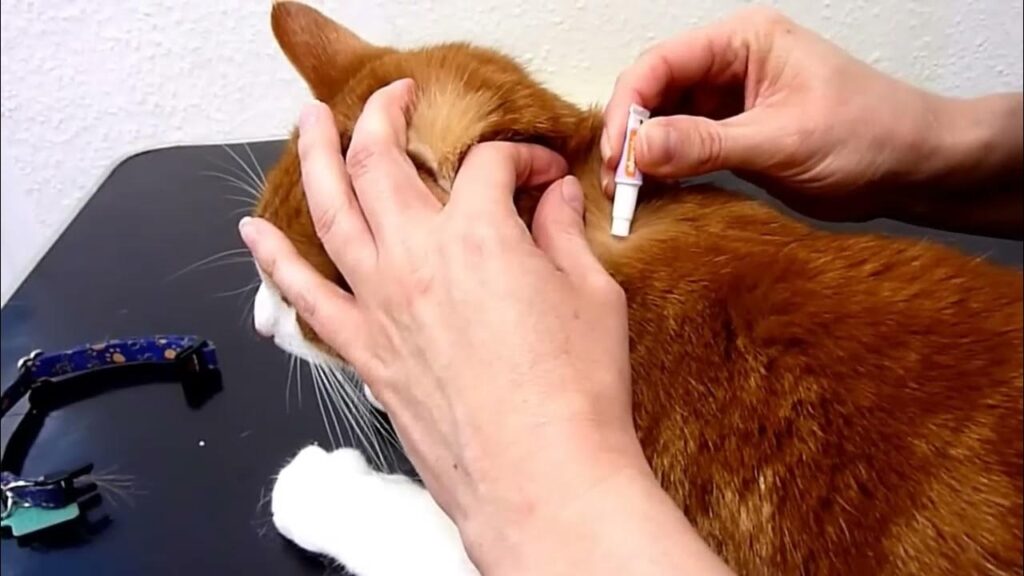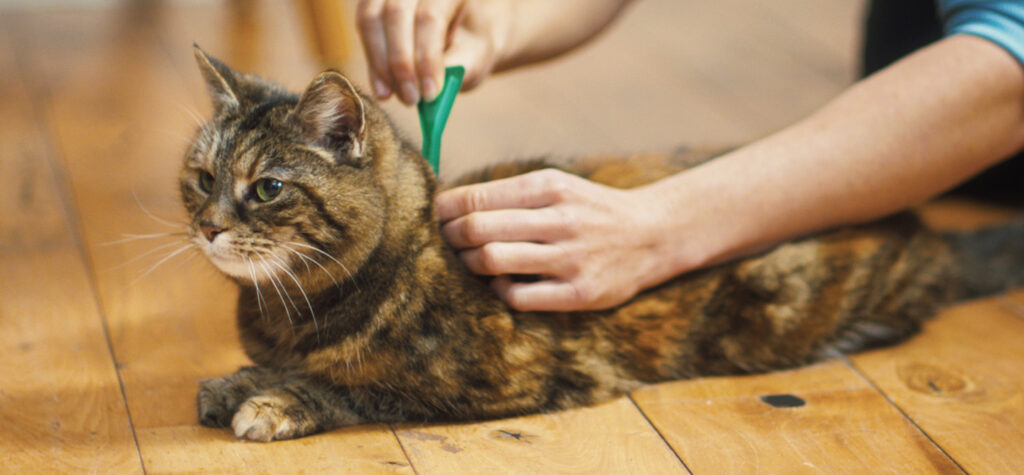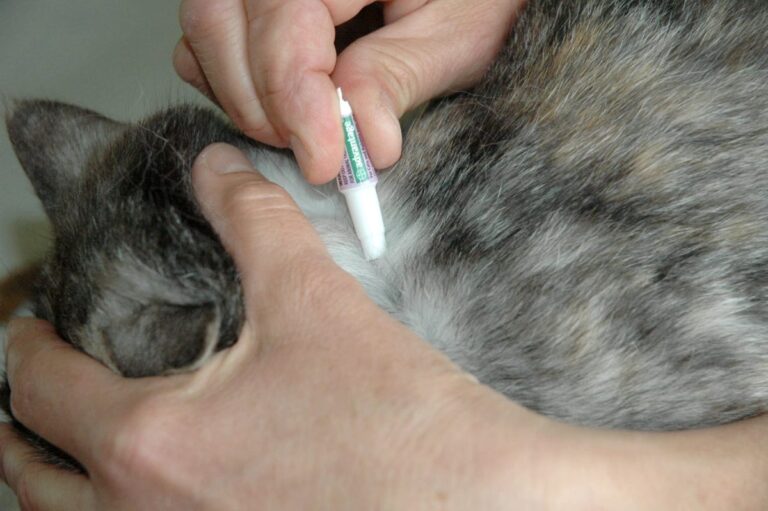Administering flea medicine to a resistant cat requires patience and preparation. Begin by choosing a calm, distraction-free area and gather all necessary supplies like the flea medication, gloves, treats, and towels. If your cat tends to scratch or bite, consider using gloves or a towel for protection.
Stay composed and confident as your cat can sense your emotions. To manage a feisty cat, swaddle them in a towel, leaving their head exposed. Apply the flea medicine between their shoulder blades, parting the fur carefully. Ensure you follow dosage instructions precisely and avoid touching the application spot.
After application, offer treats and praise as positive reinforcement. Monitor your cat for any adverse reactions and contact a vet if needed. Always use cat-specific flea medication and consult your vet for assistance if the process proves exceedingly challenging or stressful for your cat.
How to Prepare for Flea Medicine Application?

By meticulously setting up a serene environment, gathering essential supplies, and considering protective gear, you’re better equipped to handle your cat and administer the flea medicine effectively. This approach fosters a smoother experience for both you and your feline companion.
Choosing the Right Environment
When gearing up for flea medicine application on your cat, selecting the proper environment plays a crucial role. Opt for a tranquil room free from disturbances or loud noises. This setting should offer a comfortable space for both you and your feline friend. Dim the lights and eliminate potential distractions to create a calming atmosphere.
Gathering Necessary Supplies
Before initiating the application process, ensure you have all the required items readily available. Gather the specific flea medication designed for your cat’s size and needs. Additionally, include gloves for personal protection, especially if your cat tends to be difficult or aggressive. Treats serve as positive reinforcement for your cat’s cooperation. Towels may be handy for handling your pet comfortably, providing both security and ease during the process.
Consideration of Protective Gear
If your cat has a history of being uncooperative or aggressive during handling, it might be wise to use protective gear. Gloves or a towel can shield you from potential scratches or bites, offering a layer of protection while handling a challenging cat. This precautionary measure not only ensures your safety but also instills confidence as you approach the flea medication application.
What are the Best Techniques for Handling a Difficult Cat?

When dealing with a difficult cat during flea medicine application, employing effective handling techniques can ease the process. Here are some of the best approaches:
Towel Wrapping Method
- Prepare a Towel: Lay a towel flat on a surface. The size should allow you to wrap your cat comfortably without causing distress.
- Secure Your Cat: Gently place your cat on the towel, ensuring they are at ease. Gradually wrap the towel around their body, leaving their head exposed. This method helps restrain their movement while keeping them comfortable.
- Expose the Application Area: Fold back a section of the towel to reveal the area between the shoulder blades where the flea medicine will be applied.
Secure Hold Technique
- Confident Handling: Approach your cat calmly but confidently. Use one hand to securely grasp your cat behind the shoulders, ensuring a gentle yet firm hold.
- Limit Movement: Restrain your cat’s movement by holding them close to your body, preventing sudden movements while applying the flea medication.
- Maintain Comfort: Be mindful of your cat’s comfort and try to keep the handling process as brief and gentle as possible to minimize stress.
Distractive Approach with Treats
- Positive Reinforcement: Utilize treats to distract and reward your cat. Offer treats before and after applying the flea medication to create a positive association.
- Gradual Approach: Use treats to gradually gain your cat’s cooperation. While holding or wrapping them, provide treats to keep them occupied and less focused on the application.
These handling techniques aim to balance control and comfort, ensuring a smoother process when applying flea medicine to a resistant or difficult cat. Always prioritize your cat’s well-being and approach each technique with patience and gentleness.
FAQ’s
Do fleas fall off cats after treatment?
Fleas might not fall off immediately but will die within a few hours or days after treatment, eventually dropping off.
What kills fleas the fastest?
Flea treatments containing ingredients like fipronil or imidacloprid often act swiftly, killing fleas within hours of application.
What kills fleas on cats best?
Prescription-strength flea medications, like those prescribed by vets, tend to be the most effective in killing fleas on cats.
What is the best homemade flea killer?
A homemade solution of diluted apple cider vinegar or a mixture of lemon juice and water might help repel fleas, but efficacy can vary.
How long does it take to fully get rid of fleas on a cat?
It typically takes a few weeks to fully eliminate fleas on a cat, considering the life cycle of fleas and consistent treatment.
Can fleas live in human hair?
Fleas can jump onto humans but prefer animals as hosts. While they might explore human hair, they don’t typically live there for extended periods.
Final Words
In conclusion, to give medicine to a tough cat for fleas, it’s important to make a calm place and have all the things you need. Ways like using a towel or holding them safely can help deal with a strong cat during the medicine time.
Choosing a quiet spot, getting the stuff you need like medicine, gloves, treats, and towels, and thinking about keeping safe are really important steps. Being gentle and giving treats can help make it easier. Keep watching your cat for anything strange and ask a vet for help if you need it. Remember, being patient and gentle makes giving flea medicine easier for both you and your cat.

